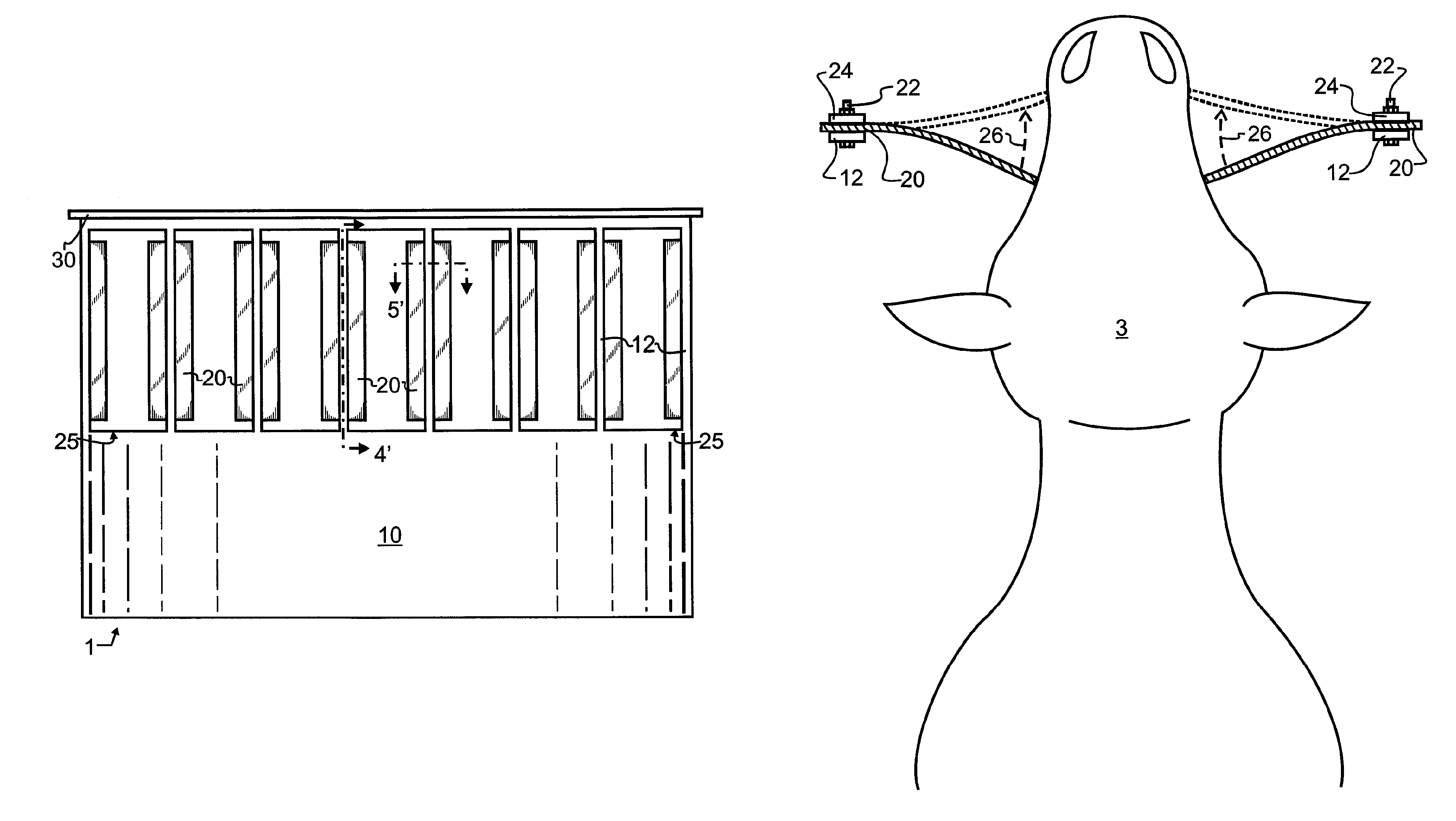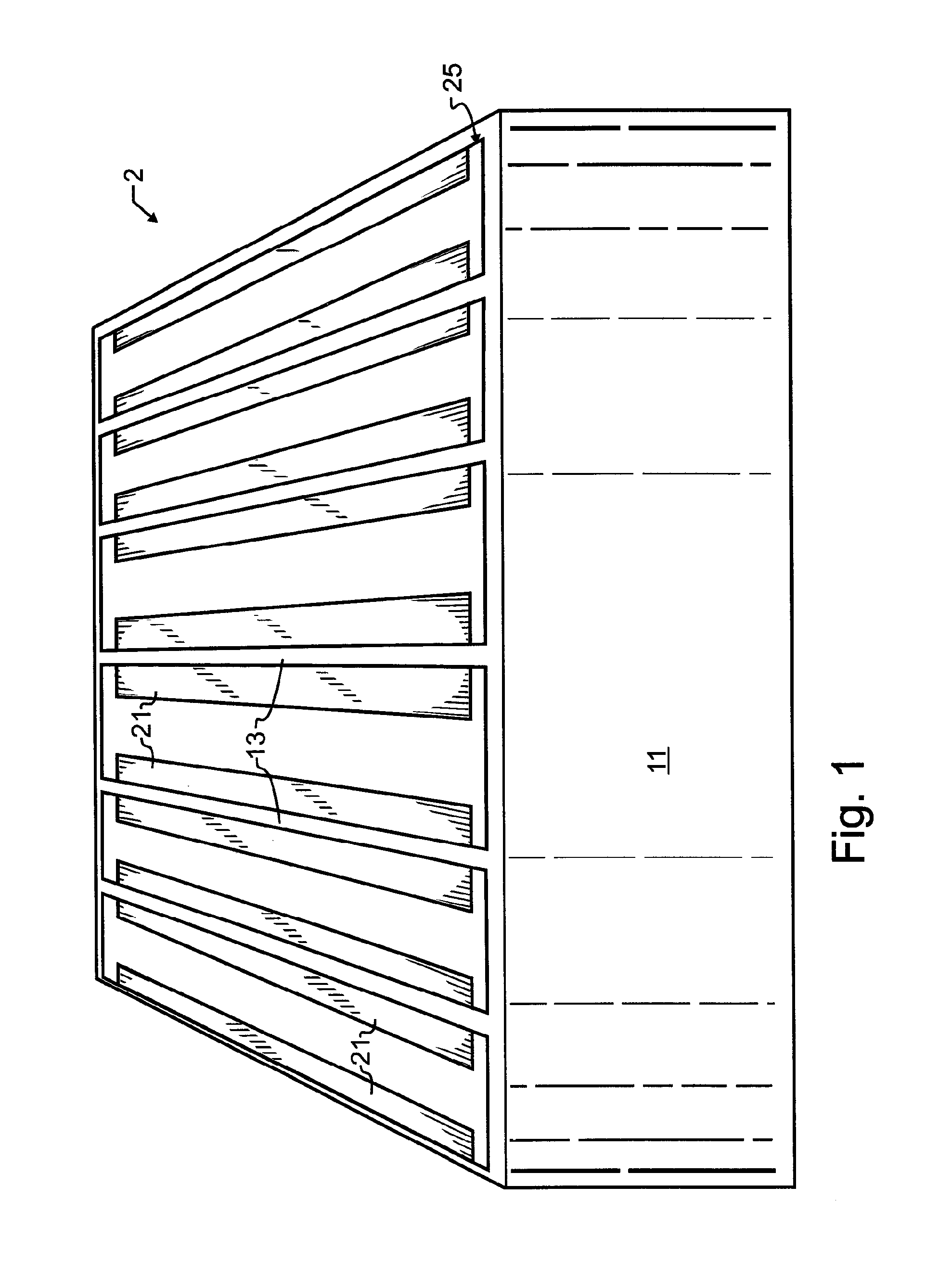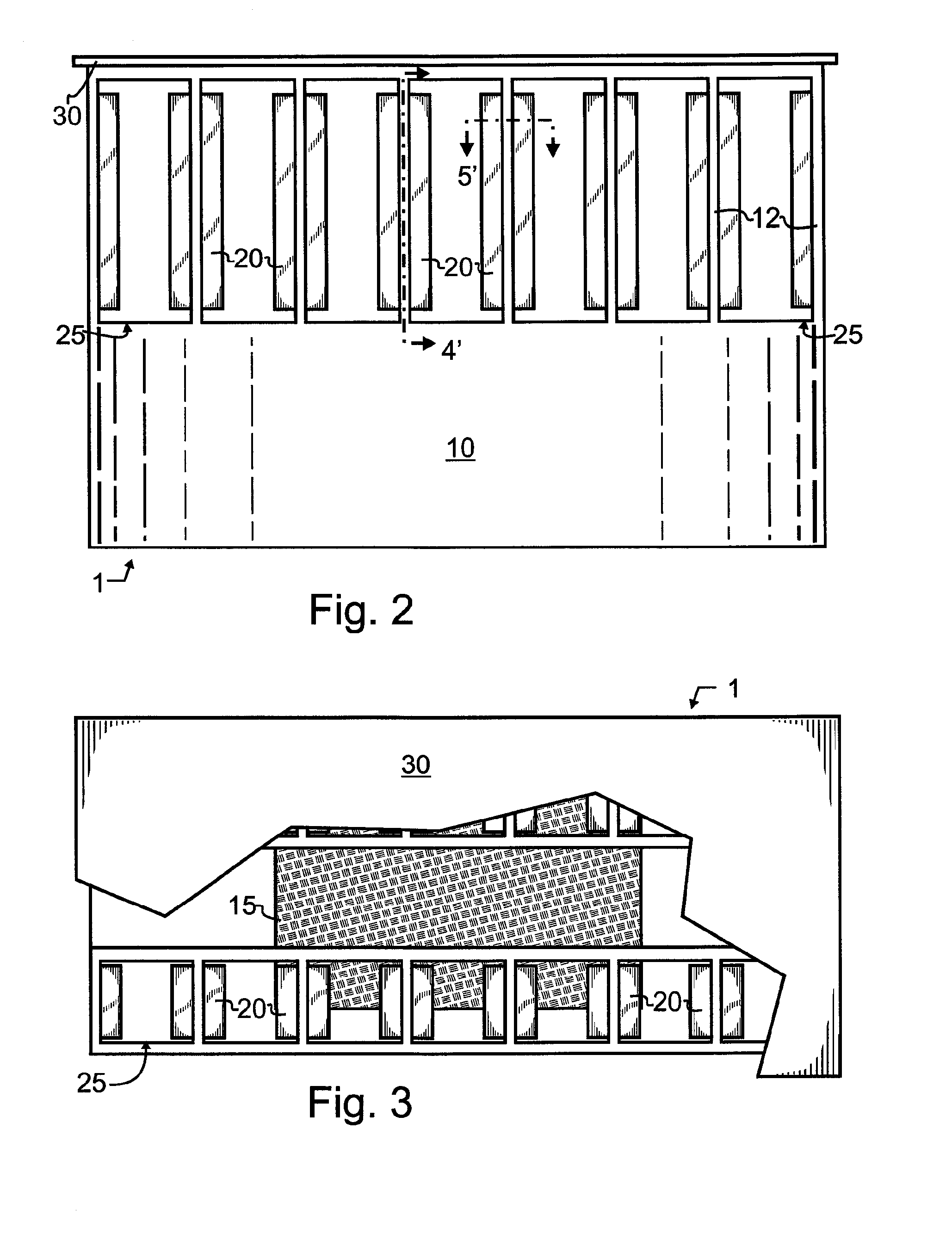Waste less hay feeders
a feeder and waste technology, applied in the field of animal husbandry, can solve the problems of large losses of feed, spoilage and become waste, and unaccepted reliance on random events of nature by mankind, and achieve the effects of reducing the need for waste removal to very low levels, reducing the likelihood of an animal being trapped, and reducing the likelihood of feed was
- Summary
- Abstract
- Description
- Claims
- Application Information
AI Technical Summary
Benefits of technology
Problems solved by technology
Method used
Image
Examples
Embodiment Construction
[0027]Manifested in the preferred embodiment, the present invention enables a single feeder such as feeder 2 of FIG. 1 or feeder 1 of FIGS. 2 and 3 to be used with many different and diverse animal species, including cows, sheep, goats, deer, lama, camels and others. A feeder 2 may have a bottom skirt 11 which encircles hay or other similar feed, thereby preventing an animal 3 from stepping on the hay held therein. Rising from skirt 11 are a plurality of bars, straps, strips or similar riser bars 13 such as are known in the prior art or incorporated herein above by reference. The spacing between adjacent straps 13 defines the maximum width of each opening 25 through which an animal may feed. Since riser bars 13 are preferably sufficiently rigid to keep a hungry animal from pressing into and burying its head in the hay, these riser bars 13 will also limit or control the upper size limit of animal that may be accommodated by feeder 2. Consequently the spacing between riser bars 13 wil...
PUM
 Login to View More
Login to View More Abstract
Description
Claims
Application Information
 Login to View More
Login to View More - R&D
- Intellectual Property
- Life Sciences
- Materials
- Tech Scout
- Unparalleled Data Quality
- Higher Quality Content
- 60% Fewer Hallucinations
Browse by: Latest US Patents, China's latest patents, Technical Efficacy Thesaurus, Application Domain, Technology Topic, Popular Technical Reports.
© 2025 PatSnap. All rights reserved.Legal|Privacy policy|Modern Slavery Act Transparency Statement|Sitemap|About US| Contact US: help@patsnap.com



